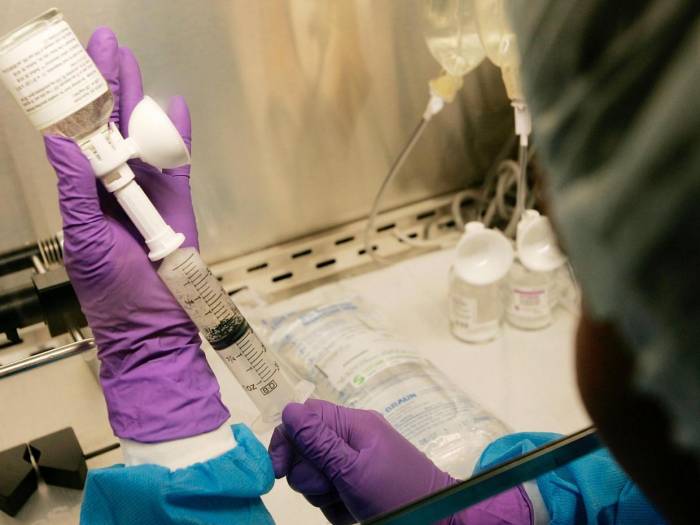Scientists were also able to show that the virus could be injected into the bloodstream to kill cancer cells, which may have spread to other parts of the body in more advanced forms of the disease.
“The new virus specifically infects and kills pancreatic cancer cells, causing few side effects in nearby healthy tissue,” said lead author, Dr Stella Man, from Barts Cancer Institute at Queen Mary University London (QMUL), who described it as “selective and effective”.
The team say that the advance could become a promising treatment for one of the most aggressive forms of cancer.
Around 9,800 patients are diagnosed with pancreatic cancer in the UK each year, and just 5 per cent of patients will still be alive five years later – the lowest survival rate of any cancer.
Dr Man added: “If we manage to confirm these results in human clinical trials, then this may become a promising new treatment for pancreatic cancer patients, and could be combined with existing chemotherapy drugs to kill persevering cancer cells.”
Independent experts warned that the findings, which only looked at mice, would need to be replicated in humans but said it was exciting to see viruses could be reprogrammed to selectively kill tumour cells in this way.
Pancreatic cancers tend to be buried within a hard-to-penetrate “stroma” layer, resembling tough scar tissue.
This makes delivery of treatments more difficult, but this paper suggested there was some ability for the virus to infect and infiltrate the stroma and reach the major tumour cells.
“Viruses are nature’s nanotechnology,” according to Professor Gerard Evan, lead pancreatic cancer researcher at Cancer Research UK, who was not involved in this study. He said harnessing viruses to target key cells is now an “exciting avenue” for research.
In 2015, researchers at Royal Marsden Hospitals provided “world first” confirmation that a modified form of the cold sore-causing herpes virus could improve survival of patients with skin cancers.
A study earlier this month showed viruses can be tailored to attack brain tumours, which are hard to reach with other treatments and drugs.
The latest study, published in Molecular Cancer Therapeutics,explored whether viruses could be similarly effective in hard-to-treat pancreatic tumours.
The team used mice that had human pancreatic cells grafted onto them and a version of the influenza virus that had been tweaked to react to one of the unique markers of pancreatic cancer.
These cancer cells have a molecule, alpha v beta 6, that is not found in healthy human cells, and the virus was modified to have a receptor-protein molecule on its outer cell that lets it detect and bind to these cells.
Once a virus binds to a cell it injects its genetic material into it and replicates, forming lots of new virus copies which replicate and burst out to infect more cells – in this case the remaining tumour cells.
The researchers say their new technique has produced the most selective viral cancer therapy seen to date, which allows it to be safely injected to spread around the body.
Maggie Blanks, CEO of the Pancreatic Cancer Research Fund, which partly funded this research, said it was exciting to see the work coming to fruition “with such positive results”.
She said: “Developing more effective treatments for pancreatic cancer becomes more urgent every year as the incidence of the disease increases, and we hope to see this research progressed further."
The team are currently seeking funding to move to clinical trials in humans in the next two years.
Prof Evan said: “It’s encouraging to see that this virus, which has been modified to recognise cancerous markers, has the ability to infect and kill pancreatic cancer cells in the lab.
“But we need further trials in patients to see if the virus can safely penetrate pancreatic tumours, which have a poor blood supply and are protected by a web of tangled connective tissue.
“Pancreatic cancer is incredibly difficult to treat and we urgently need new therapies to tackle the disease. This is a courageous approach and we look forward to seeing further results.
The original article was published in the Independent.
More about:












-1745485667.jpg&h=190&w=280&zc=1&q=100)



































